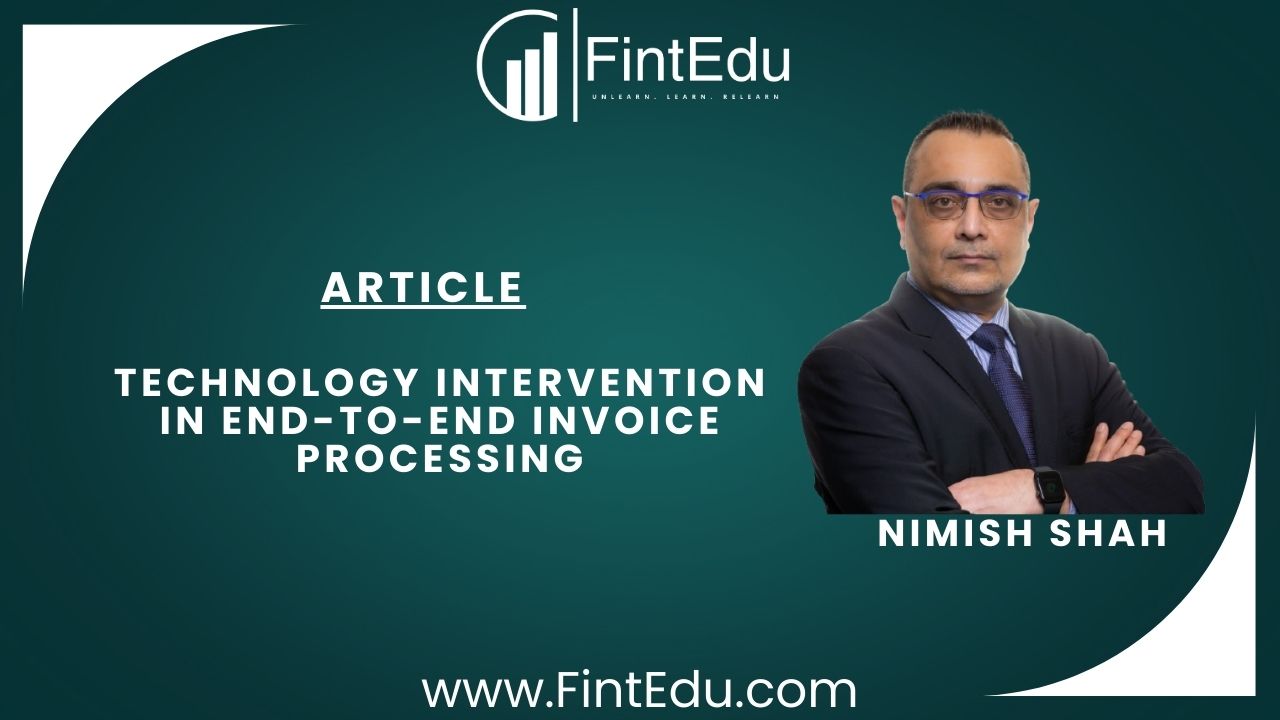Invoice processing has always been a significant burden on companies. Not only from the perspective of manual labor, but also to actively avoid and ensure any payment leakages. Over the years, various technologies have been introduced to reduce the manual labor but primarily targeted towards large volume processing. This article explores a modular approach in invoice processing which can lead to significant improvements in efficiency, accuracy and cost savings and be employed by companies irrespective of their size and outsourcing needs.
Workflow and document exchange with the service provider forms an important aspect while considering automation and technology intervention. This includes the initial invoice sent to the service provider, approval of the invoice during processing, and the final invoice repository for retrieval or audit. Additionally, there are times when information and clarifications are exchanged between the two parties. A robust query management system, with well-defined rules, can assist in such repetitive processes and manage exception handling that may be required.
At the heart of invoice processing is the capturing relevant information from invoices. This involves capturing relevant metadata from invoices, including vendor name, address, invoice amount, invoice date, and tax information. Sophisticated Optical Character Recognition (OCR) technologies are able to read and extract unstructured information and in various languages and improve accuracy levels. However, challenges still exist when invoices have multiple line items that need to be allocated to separate cost centers with effective tax rates applied to them. In such cases, a customized rule engine works better to ensure accuracy and efficiency.
Another significant area where technology intervention has made a substantial impact is in automating three-way matching for Purchase Order (PO) based invoicing. Robotic Process Automation (RPA) and other low-code automation tools have gained a lot of ground in this area, reducing manual effort to exception handling. By automating the matching process, organizations can ensure that invoices are accurately matched with purchase orders and receipts, minimizing errors and discrepancies.
For non-PO invoices, cost center coding becomes a challenge before the information can be updated into the accounting system or an Enterprise Resource Planning (ERP) system. AI technology can help standardize invoices over time, but when dealing with disparate non-standard invoices, a customized rule engine becomes a necessity to achieve desired accuracy levels. A balance needs to be achieved between using AI and customized rule engines to get the accuracy required with minimal exceptions.
Once the OCR and rule engines have processed the information, the last step is to update the accounting or ERP systems with the refined data. RPA plays an important role here to reduce manual intervention. System access, flow of screens within the system and ensuring correct data inputs are all taken care by the sophisticated RPA systems in the market today.
In addition to the above components, reporting capabilities on Key Performance Indicators (KPI’s) are available on real time basis through digitized dashboards for monitoring status of invoices including urgent invoices.
In conclusion, technology intervention in end-to-end invoice processing has transformed the way organizations handle their financial transactions. A fine-tuned technology intervention fits process needs and handles rising invoice volumes, improves vendor and client relationships, and provides real-time datasets for decision making. Companies can take a modular approach for technology intervention, but it is important to lay down the entire roadmap and understand the dependencies and cost of within the entire invoice processing journey.
Disclaimer: Content posted is for informational and knowledge sharing purposes only, and is not intended to be a substitute for professional advice related to tax, finance or accounting. The view/interpretation of the publisher is based on the available Law, guidelines and information. Each reader should take due professional care before you act after reading the contents of that article/post. No warranty whatsoever is made that any of the articles are accurate and is not intended to provide, and should not be relied on for tax or accounting advice.
Contributor
Related Posts

Anti money laundering compliance in the UAE has evolved significantly over the years. What was once ...
Read More
Anti money laundering controls are no longer limited to banks and compliance departments alone. Toda...
Read More
Corporate Service Providers operate at the point where regulation and commercial services meet. Over...
Read More